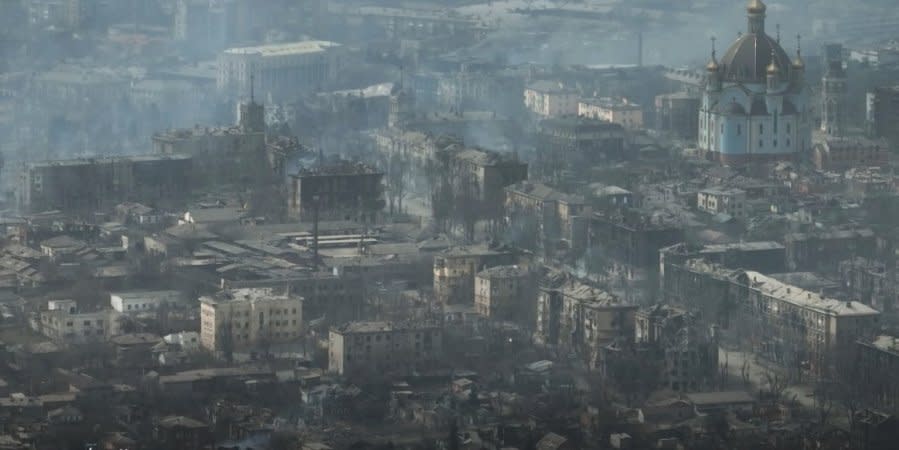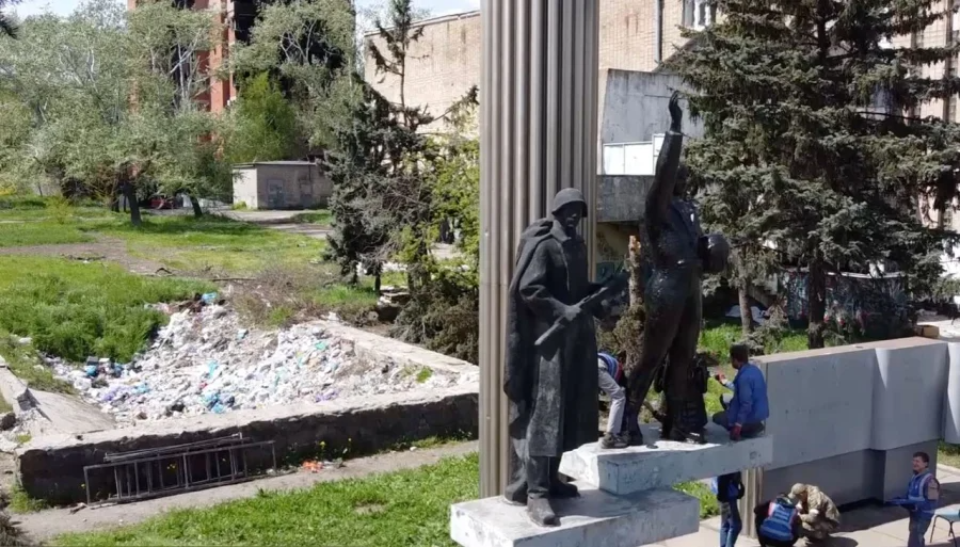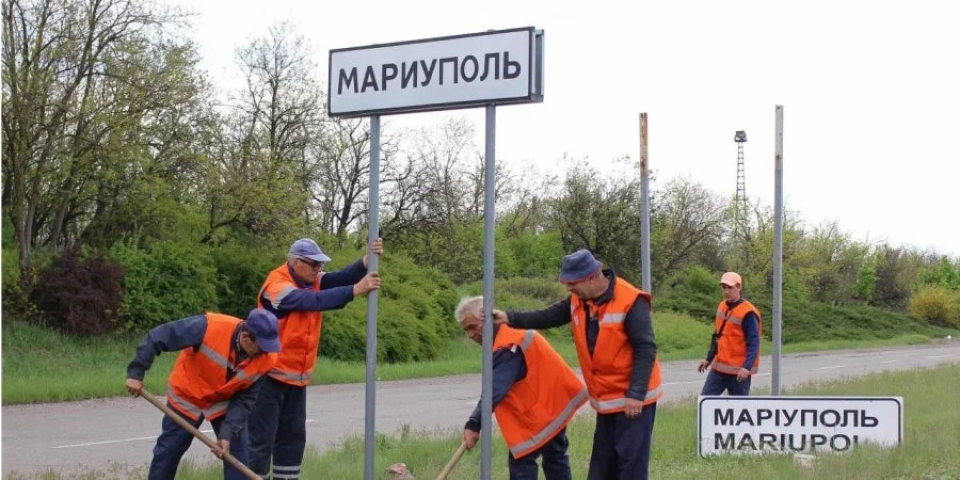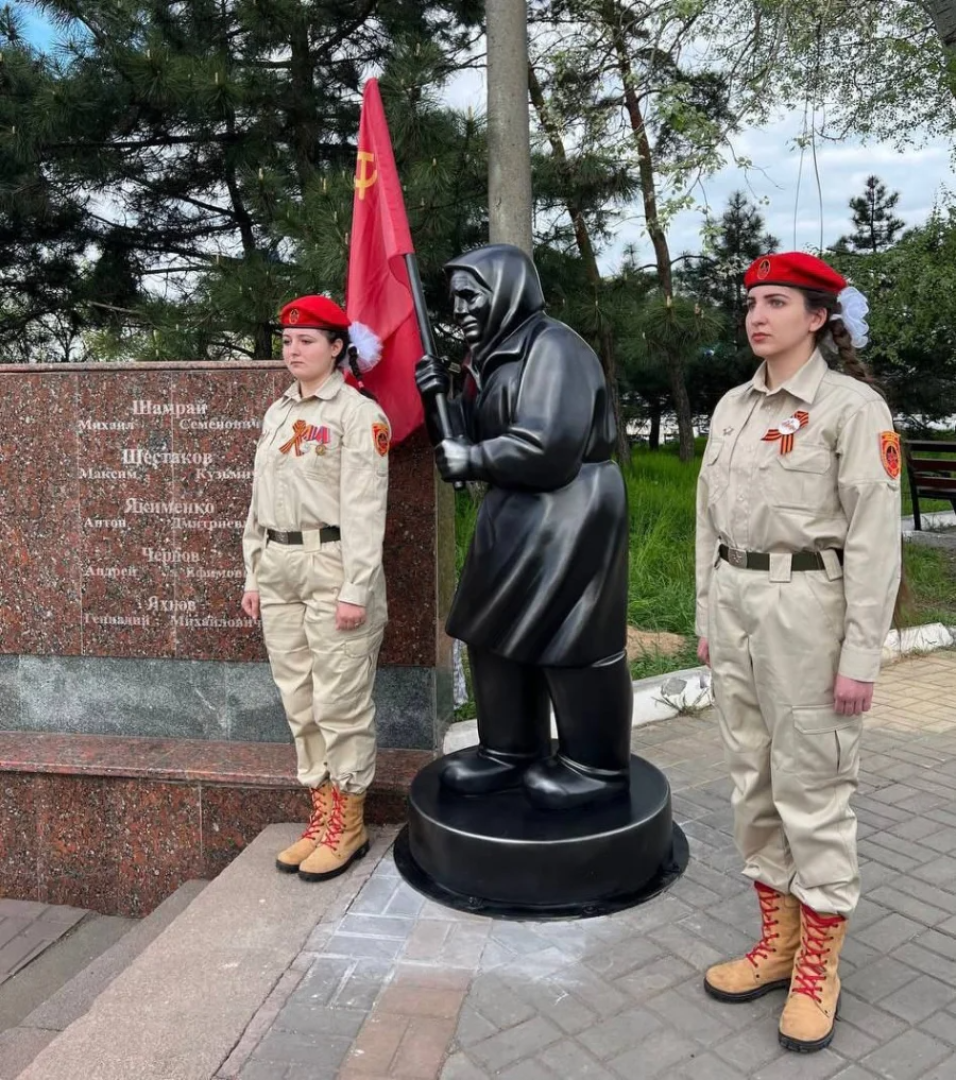How Russia is blasting Mariupol into the past

Unable to breach Ukrainian defenses, Moscow opted for a complete annihilation of the city. Now that most of Mariupol is under Russian control, the invaders are plunging what remains of it into its “glorious” Soviet past of yesteryear, destroying people’s lives and dooming them to poverty and destitution.
In other words, Pax Russica is descending on Mariupol and its residents.

Back in 2014, Russia did capture the city for a short while – before it was liberated by Ukraine after several months. Ever since then, prospering Mariupol remained a strategically vital point on Russia’s imperial agenda.
The fate of the coastal city was circumscribed by Moscow’s tried-and-true “destroy and conquer” approach – something the Kremlin has mastered in its Chechen and Syrian campaigns. Even after declaring the seizure of Mariupol numerous times, Russia still cannot crack the heroically defended citadel of the Azovstal steel mill, with its vast underground bunker complex. Azovstal has become a site of mounting Russian war crimes.
And while valiant Ukrainian fighters staunchly hold out against an overwhelming force at the industrial compound, the occupying regime is gradually tightening its grip over the rest of Mariupol, seemingly engaging in Soviet restoration.
NV reports on Moscow’s efforts to resurrect the edifice of Soviet imperial rule in one city.
Preparing to “nationalize” Ukrainian property
On April 29, Deputy Mayor of Mariupol Petro Andryuschenko said that Russians are inventorying real estate owned by Ukrainians, in order to later “nationalize” it, transferring property rights to Russia and its puppet statelets. On May 3, occupation authorities started to “re-register” private home ownership.
Read also: At what point do Russian war crimes in Ukraine qualify as genocide?
“At Mariupol’s school No. 9, the occupiers have started to register private home ownership,” Andryuschenko wrote.
“Ostensibly, this is to determine the corresponding amounts of financial compensation. In fact, it is to inventory and ‘legalize’ property seizure by invaders. Public property has already been ‘declared’ occupiers’ property, in some paper signed by (leader of the so-called Donetsk People’s Republic, Denis) Pushilin. No wonder this seizure is done under USSR flags. Thieves and looters. Nothing new there.”
According to Andryuschenko, the Russian authorities are trying to apply a veneer of legitimacy to the process, by declaring property as abandoned or decrepit – an approach they used in Donetsk.
This mirrors Soviet behavior in occupied lands. The Red Army engaged in “dekulakization” and squatting, collectivizing private lands and real estate. It’s unclear who is going to the ultimate beneficiaries of all that is being stolen from Ukrainians in Mariupol. Moscow is also stooping to simply raiding grain silos, stealing the produce of Ukrainian farms for its own use, echoing Stalin’s policies that engineered the Holodomor famines in 1932-1933.

Replacing Ukrainian road signs
On May 5, Mariupol city council said that the occupiers are “Russifying” Ukrainian road signage. Signs in Ukrainian and English are being replaced by those in Russian, exclusively. This is apparently a priority for Russian authorities, despite Mariupol suffering from an acute humanitarian crisis: people are left with virtually no food, water, and medical supplies.
“Mariupol will always remain a Ukrainian city, whatever Russians may dream of,” a city council message reads.
The Soviet Union systematically stifled all non-Russian aspects of cultural life in the Soviet empire. For the decades of “red reign,” the authorities continued the long-standing Russian imperial policy of strangling the Ukrainian language. Modern attitudes of the Russian government towards the status of Russian in former Soviet republics and satellites neatly demonstrates that this policy remains unchanged. Everything they touch, must be “de-Ukrainified and Russified.”
The “Donbas Republic” project
Ukrainian intelligence reports that several companies in Russia’s Rostov region have received orders for official signets and stamps for the Mariupol occupation authorities. These include local schools, colleges, hospitals, police, and other municipal agencies.
The official name reads: “Russia, Donbas Republic, Mariupol, military-civilian administration.”
Read also: Mariupol residents banned from moving around and outside city without ‘filtration’
Drawing up republics was the bedrock of the Soviet Union’s approach to administering its provinces. Ostensible autonomy was negated with centralized authority of the perennial capital – Moscow. Being the Soviet Union’s successor state, Russia continues to pepper its neighborhood – Georgia, Ukraine, Moldova – with these “republics.”
Filtration camps
Over the two months, Russia has forcibly deported around 2,000 men from Mariupol to go through “filtration” procedures in Bezimenne and Kozatzke, close to nearby Novoazovsk. People were not allowed to take any IDs or personal belongings. By “filtration,” Moscow means compulsory identity verification. Even Donetsk, which has been under Russian control for almost eight years, is forbidden for those who have not yet undergone “filtration.”
These men are kept on public property, guarded by Russian troops. “People are held in dreadful conditions – they have sleep on the floor, in hallways, with no medical treatment available,” said Lyudmyla Denisova, Ukraine’s parliamentary Human Rights Ombudsman.
Moscow attempts to justify this practice by saying it’s trying to protect civilians from the potential threat from “Ukrainian insurgents,” who are being “filtered out.” These “filtration camps” are becoming veritable ghettos, which Denisova called “Nazi-style concentration and torture camps.”

The Third Reich was not alone in setting up such camps. The Soviet Union was peppered with prison camps for “class enemies, traitors, and freethinkers.” Thousands of Ukrainian thinkers, poets, activists, and ordinary folk became victims of the red terror.
Preparing for a military parade under Soviet flags
The invaders are getting ready to celebrate their May 9 Victory in Europe Day with a military parade in ruined Mariupol – “dancing on corpses,” as Andryuschenko described it in an interview with NV Radio.
Read also: Interview with Azov fighter about the situation in Mariupol’s last stronghold
“I’m sure this surreal charade will happen,” Andryuschenko said. “We have to monitor everything that’s going on Mariupol and Donetsk region, to get a sense of what’s coming. And while this Pushilin is claiming there will be no parade, seniors around Mariupol are told to come out on May 9 for celebrations.”
According to Andryuschenko, in preparation for the parade, the Russians have hastily erected a monument to the “granny with a Soviet flag” in Mariupol. She has become a symbol of “pro-Russia Ukraine” for Russian propaganda. In early April, the Kremlin’s media were sharing a video of the old woman who mistook Ukrainian soldiers for Russians and was eager to greet them, with a Soviet flag in hand. As our boys were offering her humanitarian aid, she was saying that she “prayed for Putin,” and has been waiting for this moment for a long time.
Read also: Ukrainian film director releases documentary about siege of Mariupol
Fast forward to today, and the granny herself, Hannah Ivanova, is now in a hospital in Kharkiv, to where she was evacuated after a Russian mortar destroyed her house. The woman says that she thought she was greeting Russian troops, hoping that they would “stop demolishing Ukraine” and “resolve their issues peacefully” instead.
Andryuschenko also published photos that clearly show occupation authorities in Mariupol in active preparations for May 9 celebrations, despite their claims that there will be no parade in the city. All Soviet-era monuments and memorials were recently restored and refurbished – from “eternal flame” torches, to the “communists and Komsomol” monument in the city’s Prymorskyi district.

Bringing back the Soviet road police
On May 5, Andryuschenko said that State Car Inspection service was restored in Mariupol. A remnant of the Soviet governance practices, Ukraine abolished the service in 2015, but it remains very much in operation in Russia.

